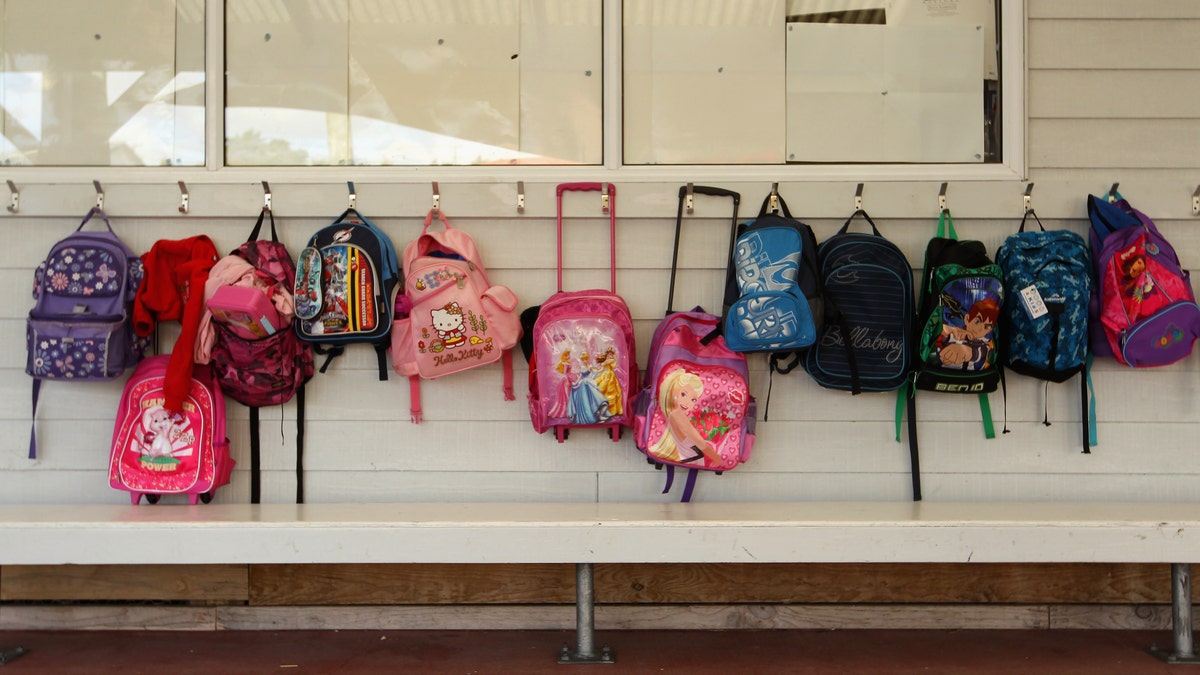
AUCKLAND, NEW ZEALAND - MAY 15: Childrens schoolbags are pictured at Westminster Christian School on May 15, 2012 in Auckland, New Zealand. Minister of Finance Bill English will announce the 2012 New Zealand Budget on May 24 at New Zealand Parliment. In a pre-Budget announcement in Wellington today May 16 2012, Education Minister Hekia Parata has announced school class sizes are going up and the Government is looking at performance pay for teachers (Photo by Phil Walter/Getty Images) (2012 Getty Images)
I know this from experience. Selecting a backpack for my child is no easy task. I dare not embark on this seemingly simple undertaking by myself. Like my daughter, every child seems to have unwritten rules and secret expectations when it comes to his or her new backpack.
In my experience, a child’s main concern is color, style (Spiderman or Dora) and size. As a parent mine is durability, material and padding. It’s wonderful that today’s backpacks offer so many options. However before taking your child to select the backpack of his or her choice, there are some issues you should be aware of.
Kids do a lot more homework today than we used to do. So naturally, there are more books and supplies to lug back and forth on a daily basis. I am absolutely shocked at how heavy my daughter’s backpack can get and – as I recently learned – of the back problems this may cause in the future.
So as Lou Paradise, president and chief of research of Topical BioMedics, explained to me, it is important to select a heavy duty backpack with straps that properly fit your child and that has padded backs and straps.
Here a few additional backpack safety tips that I will be implementing this school year:
- Students Take to the Streets in Chile Over Education
- Casa Latina’s Home Safety Checklist
- Undocumented Student Denied Diversity Position at Texas A&M
- U.S. Children of Deportees Plead for a Change to the Immigration System
- Juanes Visits Bronx High School
- Casa Latina: Creating a Great Backyard
- Best Pix of the Week
- Casa Latina: How To Get Over Your Fear of Painting
- 9/11’s High School Students Watched it All Unfold
WEIGHT GUIDLINES
It is important to teach your child to pack as lightly as possible and only carry what is necessary to avoid any excess weight. I suggest developing a routine and go through the backpack together on a regular basis to make sure you child only carries what he or she needs. I do this with my daughter every Monday.
A heavy or incorrectly worn backpack can eventually cause serious back, neck and shoulder pain. So a good rule of thumb to consider is that a backpack should weigh no more than 10% -20% of your child’s body weight.
PPOPER POSTURE AND POSITIONING
I know kids think it looks cool to wear only one strap and have the backpack slung off to one side but both straps should always be worn. And they should be positioned on the back between the shoulders, not resting on their lower back or hips.
Make sure both straps are tight so the backpack sits close to the body and has less movement. And the straps should always be positioned on the back between the shoulders, not resting on their lower back or hips.
SIGNS THAT MAY SIGNAL THERE’S A PROBLEM
Be aware of the following signs in order to recognize any issues that may arise early:
- If there is a change in posture when you child is wearing the backpack
- If your child has to struggle when they put on or take off the backpack
- If your child has red marks from the shoulder straps after he or she removes the backpack
Now that you are aware of the issues and the signs to look out for: Happy Backpack Shopping!
